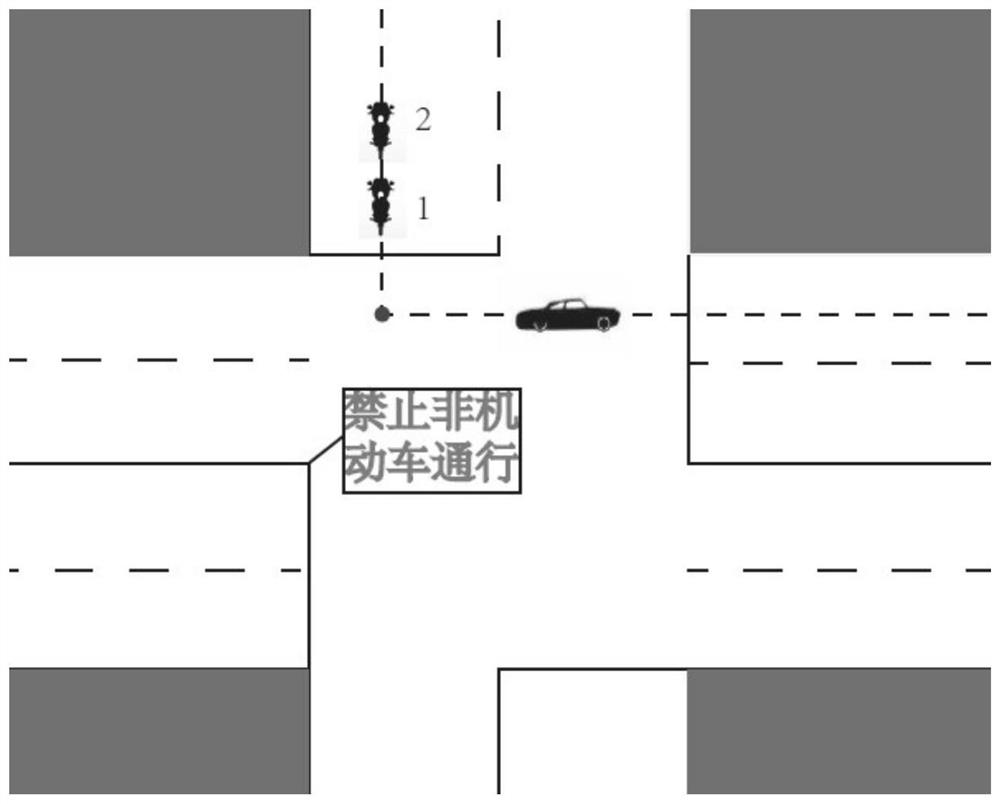Method for assigning right of way between autonomous vehicles and non-motor vehicles
An automatic driving and non-motorized vehicle technology, which is applied in the traffic control system of road vehicles, traffic flow detection, traffic control system, etc., can solve the problems of long queuing time, slow traffic speed at intersections, etc. The effect of improving traffic fairness and increasing operating speed
- Summary
- Abstract
- Description
- Claims
- Application Information
AI Technical Summary
Problems solved by technology
Method used
Image
Examples
Embodiment
[0046] like figure 1 As shown, the present invention is based on the collision risk-based automatic driving vehicle and non-motor vehicle right-of-way allocation method. Its implementation includes the following steps:
[0047]Step 1. The on-board equipment on the self-driving vehicle dynamically obtains the driving information of surrounding non-motor vehicles and its own vehicle in real time, including driving speed, driving direction, location, relative distance between vehicles, and distance between vehicles and a certain point on the road. Relative distance, by returning these data to the vehicle-mounted system, the vehicle-mounted system can predict the trajectory of the vehicle and judge whether there is a conflict point in the trajectory. like figure 2 As shown in the traffic conflict scene, non-motor vehicles and autonomous vehicles corresponding to the same conflict point are the two parties to the conflict. If there is no conflict point, there is no need to use ...
PUM
 Login to View More
Login to View More Abstract
Description
Claims
Application Information
 Login to View More
Login to View More - R&D
- Intellectual Property
- Life Sciences
- Materials
- Tech Scout
- Unparalleled Data Quality
- Higher Quality Content
- 60% Fewer Hallucinations
Browse by: Latest US Patents, China's latest patents, Technical Efficacy Thesaurus, Application Domain, Technology Topic, Popular Technical Reports.
© 2025 PatSnap. All rights reserved.Legal|Privacy policy|Modern Slavery Act Transparency Statement|Sitemap|About US| Contact US: help@patsnap.com



